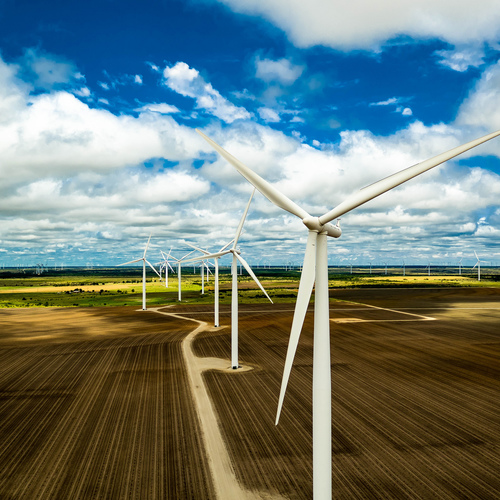
UPDATED on April 22
The energy bill approved in the U.S. Senate Wednesday includes several provisions that directly affect renewable energy and building efficiency, including money to develop electrical storage on the grid and new types of hydro power.
Passage of the Energy Policy Modernization Act on a 85-12 vote sends the bill to a House-Senate conference to work out differences with legislation approved last year in the House of Representatives.
The bill’s sponsors were Sen. Lisa Murkowski of Alaska, the Republican chairwoman of the Senate Energy Committee, and the panel’s ranking Democrat, Sen. Maria Cantwell of Washington. That gave the bill a strong bipartisan flavor. The bill stays away from making any sweeping changes in existing energy policy and moved forward after a few controversial amendments were dropped.
In an interview with The New York Times, Murkowski said, “Most people thought we couldn’t achieve anything, but we have demonstrated that we can legislate — and we can even legislate, oh my gosh, in an election year.”
The bill won support from a mix of interests, including some environmental groups, the U.S. Chamber of Commerce, car manufacturers, and the Alliance to Save Energy. Both the American Council for an Energy-Efficiency Economy (ACEEE) and the Solar Energy Industries Association (SEIA), a trade group, issued statements praising the legislation.
One provision of the bill would speed up the permitting process for marine terminals to benefit the export of natural gas. That brought a rebuke from Jason Kowalski, the policy director for the environmental advocacy group 350.org. According to The Times, Kowalski called the bill “the VHS tape of climate policy,” and said it was out of tune with current environmental realities. He said the bill was an attempt to “prop up the fossil fuel industry that’s wrecking our climate.”
The Sierra Club also was critical of some parts of the bill while generally applauding the efforts of its two sponsors.
“Unfortunately, problematic provisions remain in this bill that would boost dirty fossil fuels and dangerous nuclear projects while undermining the President’s Clean Power Plan and U.S. climate progress,” the organization said. “It is clear that a significant amount of bipartisan effort went into this legislation, but, at the end of the day, the balance of this bill favors the dirty and dangerous fossil fuels of the past at a time when we need to move full speed ahead towards an economy powered by clean, renewable energy.”
Giving renewable energy a boost
Several parts of the bill would be a boost to renewable energy, providing they survive upcoming talks between House and Senate negotiators.
“The Senate has taken a strong step in the right direction by passing the Energy Policy Modernization Act,” SEIA said in a statement. “This legislation contains several notable wins for solar energy. Chief among them are the inclusion of solar heating and cooling as technologies that can meet the federal government’s renewable portfolio standard, language directing the Energy Department to identify appropriate costs and benefits for the valuation of distributed generation (DG) solar, provisions to improve permitting of solar power plants sited on federal lands, and directing the Energy Department to study avian populations and to establish baseline scientific information.”
According to an article by The Washington Post, the bill would promote research and development of energy storage technologies that can make the grid more resilient. The 10-year program, which would get a half-billion dollars, is aimed at incorporating more battery storage on the grid to store electricity produced from renewable sources and reduce the need for gas-fired “peaker” plants brought on line at times of high demand.
Another $2 billion is earmarked for grid upgrades and modernization, including investments in the development of micro-grids that can make better use of renewable energy. Millions of dollars will be used for research and demonstration projects for marine and hydrokinetic energy — what The Post said was the production of electricity in rivers or from ocean tides but not conventional hydroelectric facilities.
Promoting energy upgrades in buildings
ACEEE said in a statement posted at its web site that the bill would help usher in more effective building codes to save energy, and help many families pay for energy upgrades in their homes.
“This bill will especially help state and local governments implement effective building energy codes and other policies to save Americans money,” the statement said. “It will help many middle-income families finance energy improvements in their homes and earn the benefits of energy savings.”
The Alliance to Save Energy cited one amendment that allows energy efficiency to be used by federal mortgage agencies as a factor in determining the value of a property. Presumably, it would be easier for people to get loans to buy houses with energy-saving features such as extra insulation or high quality windows, or renewable energy systems that reduced the draw on the grid.
Billie Kauymaya, the federal legislative director for the National Association of Home Builders, told GBA that amendment would allow homeowners to get an energy efficiency report, such as a HERS rating, and submit that so it could be used in mortgage calculations. That’s designed to improve the accuracy of mortgage underwriting and also be an incentive for making energy improvements.
One area that needed more work, Kaumaya said, was the section of the bill dealing with changes to the International Energy Conservation Code.
“Over the last few code cycles we’ve seen the cost of compliance skyrocket, and we’ve also seen the codes become more prescriptive so builders have a lot less flexibility to meet new energy requirements,” she said. “Our preference is actually for the language in the House bill.”
That version would strengthen the role of the Department of Energy in developing new versions of the code, but prevent the department from lobbying or advocating changes. Also, it would require DOE supported changes would have a 10-year simple payback, Kaumaya said.
Finally on the energy front, the Senate bill calls for new rule-making that would give homeowners more flexibility in deciding when or whether to upgrade a furnace to a high-efficiency condensing model. Conventional furnaces are vented differently than condensing models, and switching can mean an expensive remodel in some houses, she said.
Concerns about biomass plants
One amendment to the bill has some environmental groups seeing red, according to a post at ThinkProgress.
Sen. Susan Collins, a Maine Republican, and Sen. Amy Klobuchar, a Democrat from Minnesota, added language that would instruct federal agencies to develop policies that “reflect the carbon neutrality” of biomass, according to the report. That prompted a letter from 75 organizations that called the provision “dangerous.”
“This is a really horrible precedent,” Friends of the Earth Climate and Energy Program Director Benjamin Schreiber said in an email to ThinkProgress. “What is next, will they pass a bill telling government scientists that they must deem coal carbon-free?”
Biomass plants burn wood and other forms of vegetation to make electricity. Advocates say that the practice is carbon-neutral because the biomass that is burned, releasing carbon, is replaced by new vegetation that will continue to absorb carbon dioxide and thus sequester carbon. But critics say it’s not nearly that simple, and the language is inappropriate because the Environmental Protection Agency is still working on rules to quantify biomass carbon emissions, the report said.
Collins represents a state where biomass plants have recently hit a rough patch. A $13.4 million bailout to help the state’s biomass industry and the loggers who supply them won approval earlier this month in the Maine Legislature. Opponents said that the measure amounted to throwing “good money after bad,” and that the industry is unlikely to recover. Biomass has been an important energy source in Maine but two plants went off line this year because they couldn’t produce electricity competitively.
Weekly Newsletter
Get building science and energy efficiency advice, plus special offers, in your inbox.















2 Comments
pssst...
Pssst. That's a photo of the State Capitol building in Jackson, Mississippi. Just in case your google didn't quite get you to U.S. Capitol building.
Response to Meyer Brendan
Meyer,
Oops!
Thanks for your help. We've switched to the right photo.
Log in or create an account to post a comment.
Sign up Log in